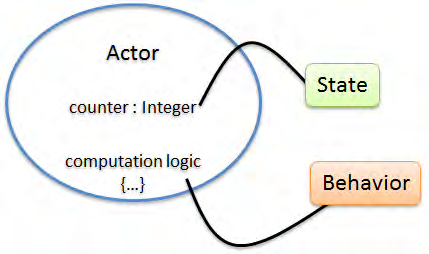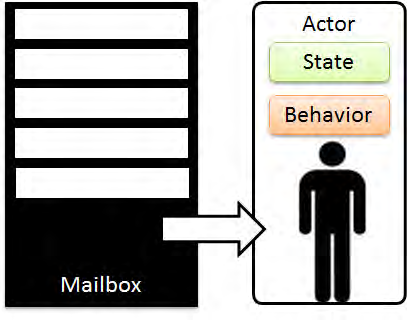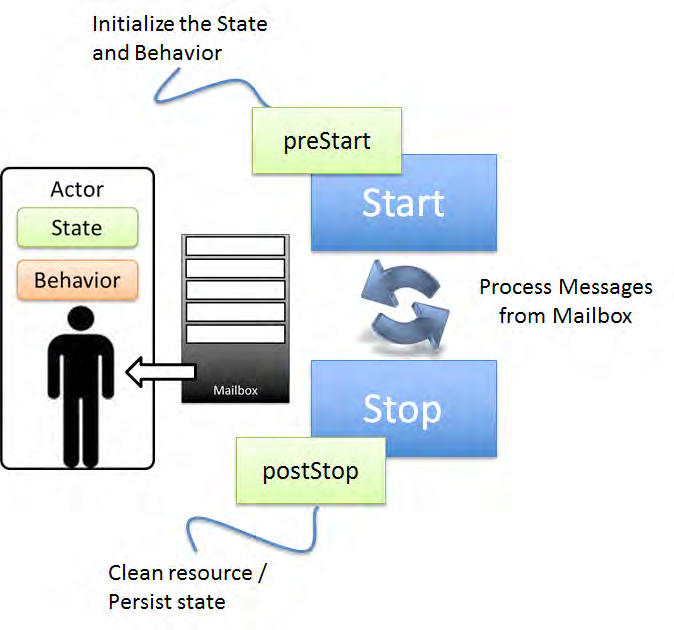Actor Model
Bài đăng này đã không được cập nhật trong 4 năm
Introducing Actor Model
The Actor Model is a model for concurrent computation that treats "actors" as the universal entity of concurrent computation. Based on the message that it receives, an actor can: make local decisions, create more actors, send more messages and determine how to respond to the next message received. Actors may modify its private state (encapsulation) but can only affect each other through messages (avoiding the need for any locks).
Starting of Actor Model
In 1973, Carl Hewitt, Peter Bishop, and Richard Steiger wrote a paper—A Universal Modular ACTOR Formalism for Artificial Intelligence, which introduced the concept of Actors. Subsequently, the Actor Model was implemented in the Erlang language by Joe Armstrong and Ericsson implemented the AXD 301 telecom switch that went onto achieve reliability of 99.999999999 percent (nine 9's).
The Actor Model takes a different approach to solving the problem of concurrency, by avoiding the issues caused by threads and locks. In the Actor Model, all objects are modeled as independent, computational entities that only respond to the messages received. There is no shared state between actors, as follows:

Actors change their state only when they receive a stimulus in the form of a message. So unlike the object-oriented world where the objects are executed sequentially, the actors execute concurrently.
Principles of Actor Model
- The immutable messages are used to communicate between actors. Actors do not share state, and if any information is shared, it is done via message only. Actors control the access to the state and nobody else can access the state. This means there is no shared, mutable state.
- Each actor has a queue attached where the incoming messages are enqueued. Messages are picked from the queue and processed by the actor, one at a time. An actor can respond to the received message by sending immutable messages to other actors, creating a new set of actors, updating their own state, or designating the computational logic to be used when the next message arrives (behavior change).
- Messages are passed between actors asynchronously. It means that the sender does not wait for the message to be received and can go back to its execution immediately. Any actor can send a message to another actor with no guarantee on the sequence of the message arrival and execution.
- Communication between the sender and receiver is decoupled and asynchronous, allowing them to execute in different threads. By having invocation and execution in separate threads coupled with no shared state, allows actors to provide a concurrent and scalable model.
Actor Model Systems
Actor is an independent, concurrent computational entity that responds to messages. First we need to understand the role played by the actor in the overall scheme of things. Actor is the smallest unit in the grand scheme of things. Concurrent programs are split into separate entities that work on distinct subtasks. Each actor performs his quota of tasks (subtasks) and when all the actors have finished their individual subtasks, the bigger task gets completed. Let's take an example of an IT project that needs to deliver a defined functionality to the business. The project is staffed with people who bring different skill sets to the table, mapped for the different phases of the project as follows:
The whole task of building something is divided into subtasks/activities that are handled by specialized actors adept in that subtask. The overall supervision is provided by another actor—project manager or architect. In the preceding example, the project needs to exist and it should provide the structure for the various actors (project manager, architect, developer, and so on) to start playing their roles. In the absence of the project, the actor roles have no meaning and existence. In Akka world, the project is equivalent to the actor system.

What is an actor in Actor Model?
Actor is modeled as the object that encapsulates state and behavior. All the messages intended for the actors are parked in a queue and actors process the messages from that queue. Actors can change their state and behavior based on the message passed. This allows them to respond to changes in the messages coming in. An actor has the constituents that are listed in the following sections.
State
The actor objects hold instance variables that have certain state values or can be pure computational entities (stateless). These state values held by the actor instance variable define the state of the actor. The state can be characterized by counters, listeners, or references to resources or state machine. The actor state is changed only as a response to a message. The whole premise of the actor is to prevent the actor state getting corrupted or locked via concurrent access to the state variables.
Akka implements actors as a reactive, event-driven, lightweight thread that shields and protects the actor's state. Actors provide the concurrent access to the state allowing us to write programs without worrying about concurrency and locking issues. When the actors fail and are restarted, the actors' state is reinitialized to make sure that the actors behave in a consistent manner with a consistent state.
Behavior
Behavior is nothing but the computation logic that needs to be executed in response to the message received. The actor behavior might include changing the actor state. The actor behavior itself can undergo a change as a reaction to the message. It means the actor can swap the existing behavior with a new behavior when a certain message comes in. The actor defaults to the original behavior in case of a restart, when encountering a failure:

Mailbox
It’s important to understand that, although multiple actors can run at the same time, an actor will process a given message sequentially. This means that if you send 3 messages to the same actor, it will just execute one at a time. To have these 3 messages being executed concurrently, you need to create 3 actors and send one message to each.
Messages are sent asynchronously to an actor, that needs to store them somewhere while it’s processing another message. The mailbox is the place where these messages are stored.

Every actor is attached to exactly one mailbox. When the message is sent to the actor, the message gets enqueued in its mailbox, from where the message is dequeued for processing by the receiving actor. The order of arrival of the messages in the queue is determined in runtime based on the time order of the send operation. Messages from one sender actor to another definite receiver actor will be enqueued in the same order as they are sent.
Actor lifecycle
Every actor that is defined and created has an associated lifecycle. Akka provides hooks such as preStart that allow the actor's state and behavior to be initialized. When the actor is stopped, Akka disables the message queuing for the actor before PostStop is invoked. In the postStop hook, any persistence of the state or clean up of any hold-up resources can be done.

All rights reserved